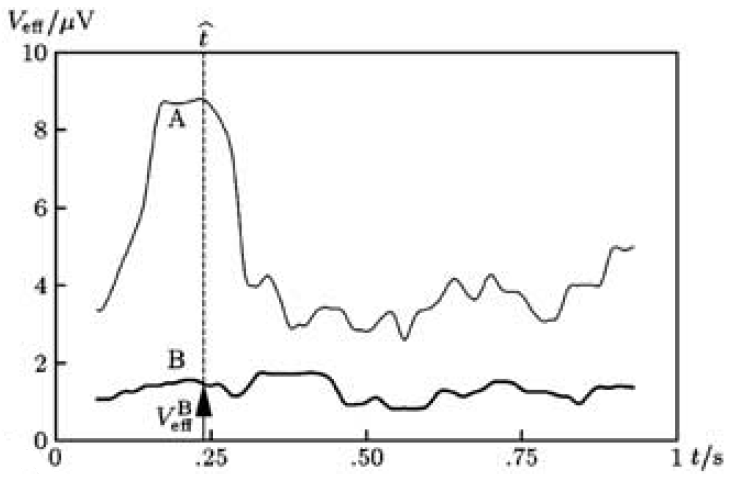Dec 05 2013
EEG ESP
I was recently asked to analyze a study looking at electroencephalogram (EEG) tracings for people separated in two different and shielded rooms and claiming to show correlations between the two – the suggestion being that some sort of unusual communication (anomalous cognition) was taking place.
This study was from 2003, so it’s not exactly news, but this line of research is worthy of a skeptical analysis. Using EEG to look for ESP effects goes back to the 1960s. Like all of ESP research, this paradigm produced some anomalies but not a consistent and replicated effect, Every now and then someone tries to replicate it, with varying results.
As a research tool using EEG can be very problematic – or useful, depending on your perspective. EEGs work by placing electrodes (called leads) in a specific pattern along the scalp. An EEG channel – one tracing of squiggly lines – is produced by recording the difference in electrical potential between two adjacent leads. An EEG montage (the French pioneered much of EEG technology and so EEG jargon is largely French) is a particular pattern of channels covering the available leads.
The challenge in using EEG for research purposes is that you have many channels (13 or 21 are common) producing lots of data with lots of noise. EEGs are noisy, with many sources of artifact: eye blinking, movement of facial muscles, heart beat, and ambient electrical noise. The underlying brain activity itself can be noisy, changing with sensory stimulation, level of consciousness, and eyes open or closed.
This is an ideal situation if your goal is to pull spurious signals out of all this noise. There is a lot of raw material to work with, and it does not take much creativity to squeeze an apparent effect from the background. Just keep torturing the data until it confesses.
It is also a setup for Simmons et al’s “researcher degrees of freedom.”
Let’s take a look at this 2003 study. The researchers claim:
” Significant departures of Q ratios from reference distributions, based on baseline EEG in non-stimulation periods, were found in most non-stimulated subjects. The results indicate that correlations between brain activities of two separated subjects may occur, although no biophysical mechanism is known.”
But, in the discussion the admit:
“We did not see any VEP-like wave-forms in the averaged EEG of the non-stimulated subjects: a more sophisticated data-analytic technique was necessary to detect an effect opposing the null hypothesis. There was no preferred direction of the effect; both increasing (Q>Ṽmax) and decreasing (Q<Ṽmin) effective EEG voltages were observed in non-stimulated subjects. Neither was there any ‘locus of maximal effect’; the outliers occurred not only at occipital locations, i.e. homotopic to the areas primarily affected in the stimulated subject, but also in parietal and central regions.”
So – there were random fluctuations from random noise, sometimes down, sometimes up, and in various regions of the brain, not in any way (except temporally) correlating with the EEG changes in the subject. There were also such departures, but not as big, in the control samples, when the subject was not being stimulated. This sounds like random noise, requiring a “sophisticated data-analytic technique” – for which you can read, “torturing the data.”
 Looking at the data itself (graph above) there does not appear to be any effect. It just looks like random noise to me. The effect size claimed here is also very tiny – a tiny variable effect indistinguishable from noise. I doubt the researchers could have looked at the tracing for subject B and determined from that when A experienced the stimulus.
Looking at the data itself (graph above) there does not appear to be any effect. It just looks like random noise to me. The effect size claimed here is also very tiny – a tiny variable effect indistinguishable from noise. I doubt the researchers could have looked at the tracing for subject B and determined from that when A experienced the stimulus.
An attempted replication of the study in 2008 by a different researcher was also completely negative.
Dean Radin performed a similar experiment in 2004 and found correlations in 3 of 13 pairs of subjects. He declared this a positive result “in certain circumstances” – also known as cherry picking. This is also a good example, common in dubious ESP research, of overpowering a study so that tiny random fluctuations can be made to have very small p-values (statistical significance).
Conclusion
Once again we have an ESP research paradigm with the following features:
– Tiny and inconsistent effect sizes
– Overpowered studies and creative statistical analysis in order to create false positive results with impressive p-values
– Lack of independent replication
– The usual suspects showing positive (but not compelling) results.
What we never seem to get with such ESP research are clear results, with significant effect sizes in a consistent pattern, and independently replicated – also known as the standard threshold for scientific acceptance.
The pattern of results we do see are consistent with the null hypothesis – no actual real effect at work. What we do end up with is documentation of how noisy systems and motivated researchers can use creative statistical analysis to create false positive results.






